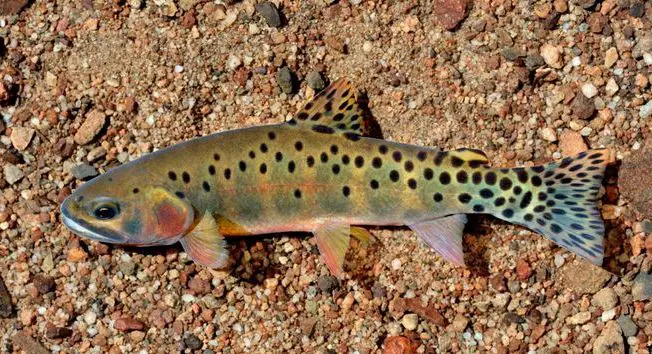This post was last updated on April 8th, 2014 at 05:33 pm
The Rio Grande Cutthroat (Oncorhynchus clarki virginalis)

This beautiful species of cutthroat lives in a small portion of its original range. Actually it can be found in only less than 15% of the areas where it once inhabited. Now found in southern Colorado and Northern New Mexico areas. Most of its current population can be found in Santa Fe National forest. It was one time a resident of much of the Rio Grande and Pecos River drainages of New Mexico and Colorado. The Rio Grande Cutthroat trout is the Southernmost member of the cutthroat species. It historically occupied waters down to southern New Mexico. In Colorado, their range is limited to the headwaters of the Rio Grande. It cannot be known just how far south this species once existed due to the changing of their habitat and lack of early documentation.
Unlike many of the sub species of cutthroat trout the Rio grande’s eat mainly insects, aquatic and terrestrial. They live between 3-5 years on average but have been documented as living much longer. These trout, as most cutthroat have experiences hardships in the last century’s. This is mostly due to introduction of many other trout species into their native habitats. The Rio Grande cutthroat (and all the other species) have a tendency to breed with the rainbow trout causing the typical hybridization. They also compete with the non native brook and brown trout for food sources. There are also other factors that have been detrimental to the Rio grande trout such as animal grazing, mining, and mismanagement of forestry operations.
Since the 1970’s, the subspecies has been re-introduced into numerous areas of suitable habitat within its native range, and on-going efforts focus on improving, protecting and securing habitat for extant populations. (New Mexico Department of Game and Fish 2002, Colorado Division of Wildlife 2004)
